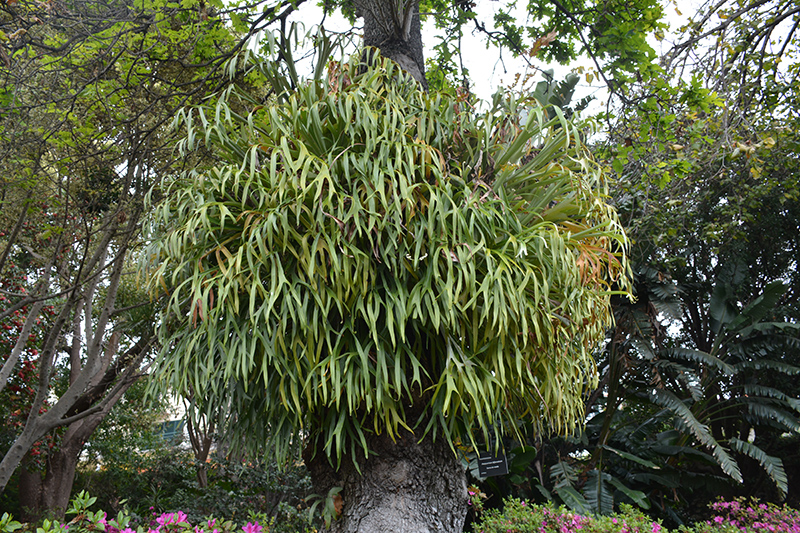Plant Finder
Height: 3 feet
Spread: 3 feet
Sunlight:
![]()
![]()
Hardiness Zone: 9
Other Names: Elkhorn Fern, Platycerium alcicorne
Description:
An evergreen, epiphytic fern with distinctive fronds that resemble the forked antlers of a stag; leathery, gray-green fronds grow outward from the crown; water crowns regularly and do not allow to dry out; an interesting plant for baskets or containers
Ornamental Features
Staghorn Fern is primarily valued in the garden for its broadly spreading habit of growth. Its attractive large deeply cut lobed leaves emerge light green in spring, turning grayish green in color the rest of the year.
Landscape Attributes
Staghorn Fern is an herbaceous evergreen fern with a ground-hugging habit of growth. Its relatively coarse texture can be used to stand it apart from other garden plants with finer foliage.
This is a relatively low maintenance plant, and should not require much pruning, except when necessary, such as to remove dieback. It has no significant negative characteristics.
Staghorn Fern is recommended for the following landscape applications;
- Accent
- Rock/Alpine Gardens
- General Garden Use
- Container Planting
- Hanging Baskets
Planting & Growing
Staghorn Fern will grow to be about 3 feet tall at maturity, with a spread of 3 feet. It grows at a slow rate, and under ideal conditions can be expected to live for approximately 10 years. As an evegreen perennial, this plant will typically keep its form and foliage year-round.
This plant does best in partial shade to shade. It does best in average to evenly moist conditions, but will not tolerate standing water. It is not particular as to soil type, but has a definite preference for acidic soils. It is somewhat tolerant of urban pollution. This species is not originally from North America.
Staghorn Fern is a fine choice for the garden, but it is also a good selection for planting in outdoor containers and hanging baskets. Because of its spreading habit of growth, it is ideally suited for use as a 'spiller' in the 'spiller-thriller-filler' container combination; plant it near the edges where it can spill gracefully over the pot. It is even sizeable enough that it can be grown alone in a suitable container. Note that when growing plants in outdoor containers and baskets, they may require more frequent waterings than they would in the yard or garden.







